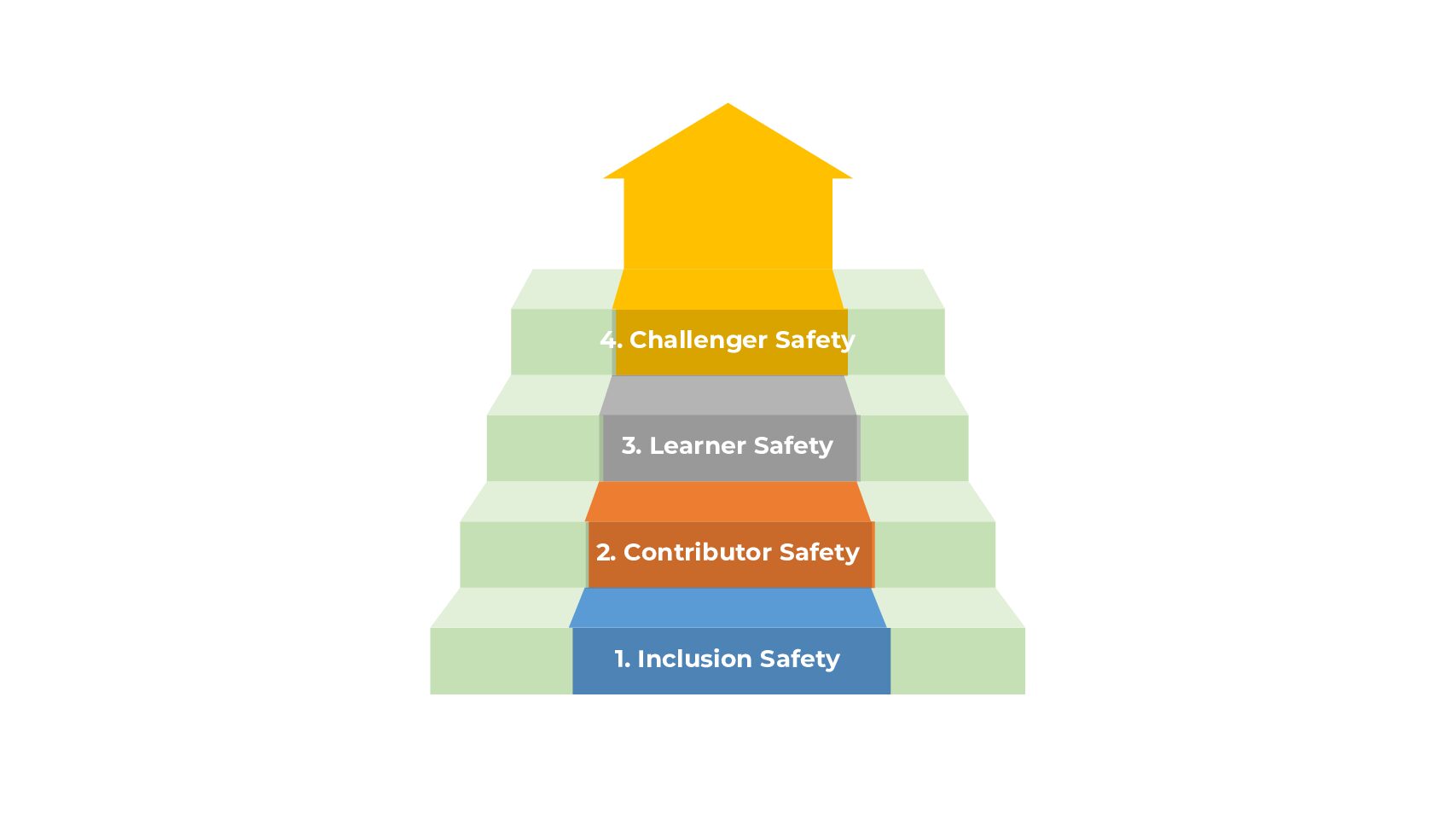In my Executive Team Coaching practice, there are many team competencies that require a team’s conscious attention and, in my experience, the foundational team competency on which all other team competencies sit, is the presence of Psychological Safety.
Research findings
In her book, The Fearless Organization: Creating Psychological Safety in the Workplace for Learning, Innovation, and Growth, Amy Edmondson defines psychological safety as “the belief that the work environment is safe for interpersonal risk taking. The concept refers to the experience of feeling able to speak up with relevant ideas, questions, or concerns. Psychological safety is present when colleagues trust and respect each other and feel able – even obligated – to be candid.”
In this same publication, Edmondson quotes Julia Rozovsky’s research findings in Google’s quest to build the perfect team confirms my experience when she says that – “Psychological safety was by far the most important of the five key dynamics we found. It’s the underpinning of the other four.”
Other researchers such as Edgar Schein, Warren Bennis, and Amy Edmondson herself, have helped us understand how and why psychological safety is directly related to team performance and business impact.
Increased ownership vs Self-preservation
When psychological safety is high, people take more ownership and release more discretionary effort, resulting in higher-velocity learning and problem solving. When it’s low, people don’t muscle through the fear. Instead, they shut down, self-censor, and redirect their energy toward risk management, pain avoidance, and self-preservation.
In my previous Blog, Leading a True Team, I described a team where there was little or no Psychological Safety, due primarily to the leadership style of the team leader. This team leader wanted to do it all by himself, driving individual team members to deliver what he wanted and in the way he wanted it done. There was no sense of team in this pseudo-team instead there was a climate of survival and self-preservation.
If we go back to Edmondson’s definition; whilst we can understand Psychological Safety at a conceptual level, it’s difficult to translate the concept into tangible action. So, let’s see if we can make this a little more tangible.
The 4 stages
Timothy Clark describes 4 Stages of Psychological Safety in his book, The 4 Stages of Psychological Safety: Defining the Path to Inclusion and Innovation:
- Inclusion Safety – Feel safe to belong to the team. They are comfortable being present, do not feel excluded, and feel like they are wanted and appreciated.
- Contributor Safety – Feel safe to contribute their own ideas, without fear of embarrassment or ridicule. This is a more challenging state, because volunteering your own ideas can increase the psychosocial vulnerability of team members.
- Learner Safety – Are able to learn through asking questions. Team members here may be able to experiment, make (and admit) small mistakes, and ask for help.
- Challenger Safety – Can question others’ (including those in authority) ideas or suggest significant changes to ideas, plans, or ways of working.
If we consider Clark’s 4 stages as a set of 4 steps on a stairway and consider a new team member progressing up this stairway we could think about what the team would need to do in order for the new team member to feel included, to contribute, to learn and to challenge.
For instance, in order to establish the safety to challenge, we could ask the new team member to challenge our thinking from day one and tell them why we value the objectivity that a new team member brings to the team.
In my next blog, I’ll get into Constructive Challenge in more detail.



